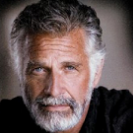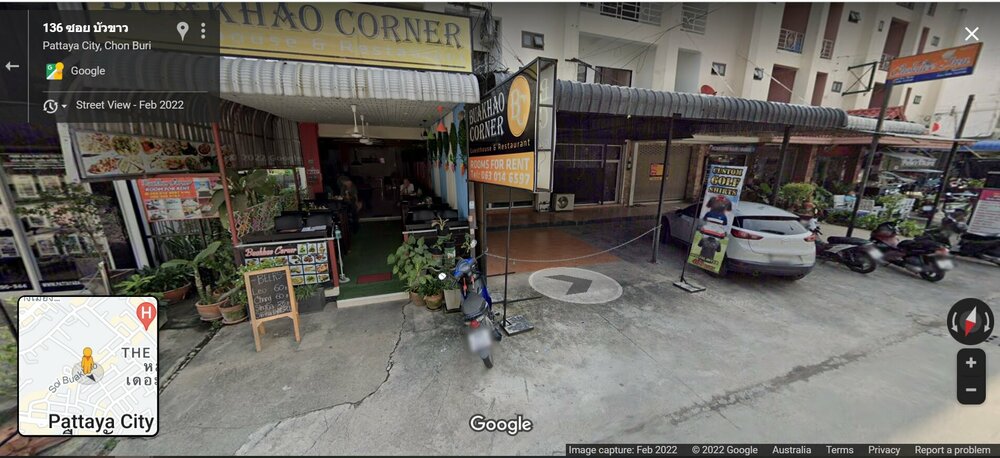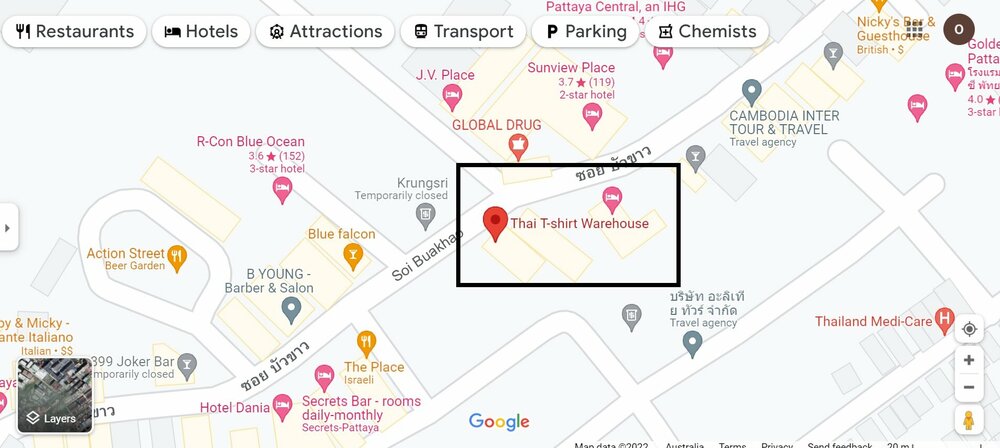-
Posts
9,456 -
Joined
-
Last visited
-
Days Won
7
Content Type
Profiles
Forums
Blogs
Events
Everything posted by Zeb
-
The Key Bridge was completed in 1977, design would have started around 1970. Large scale fender protection of piers was not required then in USA (or Australia). In Australia the Derwent River Bridge collapse (hit by the bulk carrier Lake Illawarra) was in 1975. It did not have pier protection then either. Those design rules changed in the late 70s, so bridges like Brisbane Gateway opening in 1986 had small islands built around the piers so that an errant ship would go aground before it hit the piers. This is the standard modern method of protection. It really is true that the size of container ships has grown enormously in between. Now 200,000 to 300,000 tonne container ships are common. The Dali at 100,000 tonnes is at the smaller end of modern container ships. But it is still huge compared to 1970s ships. Containerised freight was only invented by the US army during the Vietnam War to reduce theft in shipping. They found it also greatly reduced freight handling costs, and so it led to a revolution in freight shipping. Container ships could be loaded/unloaded much faster. This made it more attractive to have bigger ships. So in WWII a cargo ship like a Liberty ship was around 10,000 tonnes. In the post war period (50s to 70s) the standard large cargo ship size was a “Panamax” at 40,000 tonnes. This allowed easy passage of the Panama Canal. In the 80s and 90s the larger “Cape Size” ships grew common, at around 100,000 tonnes. They were called “Cape Size” because they were too large for the Panama and Suez Canals, hence they typically sailed around Cape Horn or the Cape of Good Hope. Since 2000 the Panama and Suez canals have both been widened and the sky is the limit. We see numerous container ships of up to 300,000 tonnes and some oil tankers at over 500,000 tonnes. With automation it takes the same crew number to sail a Panamax (15 or so) as a 500,000 tonne super tanker. So there are big economies of scale going to bigger ships. Morale of the story: no 1970s bridge was designed to take a hit from a 100,000 tonne ship. There is certainly a case to retrofit all those era bridges with pier protection. Since the 1980s most transport agencies barely have enough money to maintain their existing assets, so refits rarely happen. It also depends on bridge type. A suspension or concrete arch type bridge has much thicker piers, and so would be much less vulnerable.
-
The approach that would make the most economic sense in western countries is a road user fee based on annual mileage and the weight of the vehicle - so reflecting the damage done to roads and the costs to maintain those roads more equitably. Trucking companies would scream and costs to haul just about everything would increase - but it would come down to user pays in all senses of the word. Very difficult politically but lets not delve into that aspect too much - this thread is not the place for that. Suffice to say that may be the very reason the best economic outcome doesn't happen. Taxes from fossil fuels used in motor vehicles have far exceeded road maintenance costs in many countries anyway and have just become part of general taxation - so a broader rethink looks necessary in terms of equity and cutting emissions. Something else for the too hard basket?
-
Fair enough. Each to their own. 😋
-
A big YES there. The torque even on my entry level MG4 pushes me back in my seat. The more expensive MG4 XPower is way above that. See YouTube etc if interested. But its more than that - its a drivers car the way it corners and seems to 'want' more accelerator. Again I like it. I'm in the car more than before. Going places doing things I didn't bother about previously. I feel i'm getting more out of the years I have left - whatever number they are. 😋
-
Fair enough. I thought the same to start with and changed my mind. Glad I did. It was the right decision - for me..... With the benefit of hindsight I even settled on the best level of trim & model for my needs & circumstances. The 'bells n whistles' are OK - but the way the vehicle drives has a grin on my face when driving or even thinking about driving. 😋
-
Zombie Internal Combustion car factories in China as buyers choose EVs
-
Mmm. Might set some context as to why they thought they could carry on like this is in someone else's country. Its no excuse of course and they or innocent bystander(s) could have copped a bullet. From the linked article - 36 & 38 year olds - described as 'kids". Nope!
-
Absolutely crazy. Jailed then deported looks assured.
-
The top three battery chemistries coming soon to EVs – and none of them are solid-state Electric vehicles saw a subtle, but significant evolution in batteries during the 2010s. For example, the BMW i3’s battery capacity doubled between 2013 and 2019, using the same physical size of cells. However, nothing particularly exciting happened regarding the chemistry of those batteries. They were almost always NMC – lithium nickel manganese cobalt oxide – with gradually decreasing cobalt content and improved energy density (in other words, how much range you can pack into a given weight or size of battery). Now, we’re starting to see some seriously exciting battery developments on the horizon, all of which have important implications for EVs, and will result in a diversification of the chemistries offered in different makes and models of electric vehicles. Here, we’ll look at my personal top three favourite battery chemistries that are due to hit EVs soon – and despite the hype, you may be surprised to learn that none of them are solid-state. LITHIUM IRON PHOSPHATE AND LMFP The first of my top three battery chemistries is already offered in some of the best selling EVs today, including the Standard Range Tesla Model 3 and Y, MG4 and BYD’s electric cars. Lithium iron phosphate (LFP) replaces NMC in the cathode. It contains no cobalt or nickel, so is cheaper and more ethical, and on top of this, it has a longer cycle life (can be charged and discharged more times before its capacity degrades to the point that it’s no longer suitable for your needs) and doesn’t catch fire if severely damaged. BYD’s Blade LFP cell doesn’t even get hot if drilled straight through when fully charged! LFP’s range issue is on the cusp of being solved by LMFP, whereby manganese (or another metal) is added alongside the iron and phosphorus in the cathode. This boosts the cell’s voltage without adding much cost, and brings the energy density of this cobalt-free, cheaper, safer and more ethical chemistry close to that of NMC. Tesla was rumoured to be introducing LMFP in the refreshed Model 3, which would give the Standard Range model a range in excess of 300 miles per charge, but this has yet to happen. However, watch this space: in addition to the Tesla rumours, Gotion, a cell manufacturer backed by Volkswagen, plans to start manufacturing its LMFP cells this year. SODIUM-ION While there is a lot of focus on how make batteries that provide the most range for an electric vehicle, some of the most exciting developments will result in slightly less range vs today, but with huge advantages in other areas. Sodium-ion is a prime example of this: it eliminates cobalt, nickel, copper and lithium, replacing them with cheaper and far more abundant materials with well-established supply chains. After all, sodium is found in sea salt. Sodium-ion cells don’t pose a fire hazard if severely damaged; perform better than lithium-ion in freezing temperatures; don’t require as much thermal management (battery cooling/heating) as lithium-ion cells; and are much easier and safer to ship. So, not only are they cheaper to make and manage, but they’re cheaper to transport too, which delivers a double cost saving to consumers. Their downside is that their energy density is less than LFP, so the range per charge of EVs equipped with the first generation of sodium-ion cells will arguably best suited to urban drivers, but that’s still a valid part of the market, and one that needs affordable cars. WHAT ABOUT SOLID-STATE? The term “solid-state” encompasses a broad church of different electrolytes and chemistries, rather than being a single type of cell. “Solid-state” refers to the replacement of the liquid electrolyte and polymer separator with a solid electrolyte that does both jobs, ideally while offering faster charge and discharge times and improved safety. This means that, for example, a solid-state electrolyte could be used with a silicon anode and an LMFP cathode. The electrolyte may be so safe that the silicon anode would no longer be required, allowing for a pure lithium anode to be used instead and further reducing the bulkiness – and increasing the energy density – of the battery pack. This means that some of our cheapest and most ethical chemistries today could be made so compact that they exceed the energy density of today’s more expensive market-leading NMC chemistries, while solid-state electrolytes used in conjunction with NMC cathodes could result in seriously impressive electric vehicle ranges, including “city cars” that are more than capable of taking on cross-country journeys with ease. On top of this, some startups are now turning their attention to how to make solid-state electrolytes for sodium-ion cells. This would further reduce the cost of batteries by allowing more abundant and ethical sodium to be used instead of lithium, in batteries that rival the range per charge of today’s EVs. While early versions of solid-state batteries are already in use in niche applications today, it will be a few years before we see them offered in mass produced electric cars and vans. One thing is for certain, though: electric vehicle battery chemistries are diversifying, and shall continue to do so, bringing many cost, range and ethics advantages which are great news for electric vehicles and their buyers. https://electricdrives.tv/the-top-three-battery-chemistries-coming-soon-to-evs-and-none-of-them-are-solid-state/
-
I'm very happy with my MG4. EV sales in Australia are booming and will only increase. Am looking forward to seeing what improvements etc will come with the 2024 models. Have done about 6000 km's which has cost me about AUD $68 in total to recharge, ie I mainly recharge in the basement parking of the supermarket where recharging is free, but a 2 hour limit on parking until a parking applies. The $68 was for highway recharging. Don't know how long it will remain free but am making the most of ot while it lasts. 😋
-
2024 BYD Dolphin gets lower price model with impressive new features
-

How to keep pigeons from shitting all over your balcony...
Zeb replied to fforest's topic in General topics
Agree, But Indian myna birds are far worse. -
https://www.facebook.com/people/T-shirt-warehouse/100064000787093/
-
The Chaos Agent by Mark Greaney (Gray Man #13) Artificial intelligence leads to shockingly real devastation in this new novel in the number one New York Times best-selling Gray Man series. Someone is killing the world's leading experts on robotics and computers. A desperate Russian scientist approaches Court Gentry and Zoya Zakharova to ask for their protection, but before they can help, they are attacked by a team of professional assassins. They escape, but wherever they turn, it's clear that whoever's tracking them is always going to be one step ahead. With a danger of this level, there's no choice but to attack into the threat. There is one man who may hold the answers to all their questions. But he's gone to ground in a fortress surrounded by a veritable army. If that's not bad enough, he has a new chief of security—Court's old comrade, Zack Hightower.
-

Pattaya Go-go bars, beer bars & restaurants (News closures and Updates)
Zeb replied to john luke's topic in General topics
Yep. The icing on the cake, particularly in the back portion was many bars having their own live music playing as loud as possible, just to make sure any customers left the area as soon as they could. Talk about to how to sabotage their own businesses in one easy step. The pity was at one stage some of those bars had some reasonable talent in their line ups. -
She looks great ! 😋
-
Have just started this book and the plot is coming along very nicely. Nick Petrie is an excellent writer. The Price You Pay (A Peter Ash Novel Book 😎
-

Pattaya Go-go bars, beer bars & restaurants (News closures and Updates)
Zeb replied to john luke's topic in General topics
Suspect they will end up with some form of tiling affixed to the plywood.... -
Bernese Mountain Dog Puppy vs Lemon
-

We've all met someone a bit "odd" at random occasions.
Zeb replied to Butch's topic in Off Topic Chat
Good one Mate! 😋 -

Pattaya Go-go bars, beer bars & restaurants (News closures and Updates)
Zeb replied to john luke's topic in General topics
I believe he paid his Staff as usual during COvid as well...out of his modest UK Services Pension. I liked going there afternoons prior to the live bands etc. A good spot & good people. Hope it works out for him. -
This is pretty long - so it can be downloaded and watched when you are ready etc. ... The Downloader - Will also download heaps of other online video / audio/ images etc https://9xbuddy.xyz/en-1cd ... The clip - A Military History of the Falklands War Part 1: Air-Sea Battle in the South Atlantic
-
33 C today where I am. Thankful I'm not in Paraburdoo WA - ...................... The small West Australian town of Paraburdoo hit its highest recorded temperature of 47.9 degrees Celsius on Saturday, passing a record previously set in 1998. It comes amid an extreme heatwave in parts of the Pilbara region, with some areas forecast to get close to 50C. https://www.abc.net.au/news/2024-01-21/wa-town-paraburdoo-26-year-record-high-temperatures-bom/103372864
-
All the best Gal. Get well soon, you have a whole lot of adventures ahead of you mate. While laid up, plan your future.










